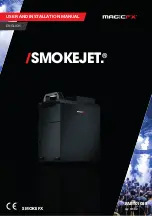
14
Plastics Formech FM660
Plastic sheet is commercially available in a wide variety of grades, thickness and colours. Materials
such as styrene and PVC are most suited to vacuum forming. Other materials such as acrylic,
polypropylene and polycarbonate will mould but difficulties may be encountered.
It is not within the scope of this manual to attempt to list all the potential problems and their solutions. It
is recommended that the newcomer to vacuum forming gains experience and confidence with easily
formed materials before moving onto the more difficult materials.
Post Forming Operations Formech FM660
After forming
After forming, most plastics can be subsequently heat formed to add such details as folds or clips.
Although many plastics can be printed, and in some cases painted, the presence of release agent used
to help free a tight moulding may make the surface resistant to further decoration.
Trimming
An ideal moulding will be ready for use when removed from the machine and requires no finishing.
However, most mouldings do require trimming before they can be used.
There are numerous methods available for this process.
Thin materials can be trimmed with a sharp knife. Shaped cutting dies can be used to cut out intricate
shapes. If no flange is required on the finished product then a trimming saw mounted in a pillar drill will
cut the moulding in a horizontal plane to free it from the surrounding material. Trim or Spindle saw are
available from Formech. Please contact our sales department for further information.
In mass production environments the range of equipment available for this requirement encompasses
clicking presses, roller presses, routers, horizontal band saws, water jet cutters, laser cutters and many
others.












































